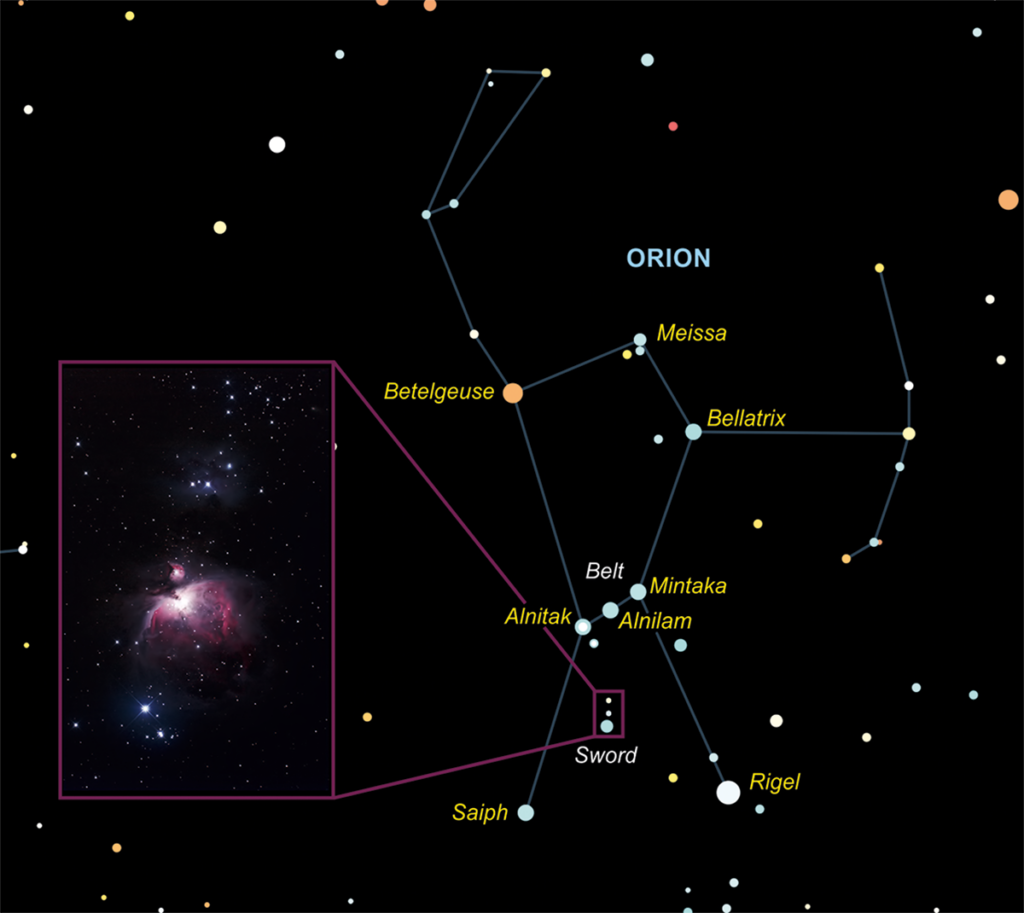ASTRONOMY FOR BEGINNERS

HOW TO SEE ORION
WHEN: THROUGHOUT WINTER
The two most recognisable night-sky patterns visible from the northern hemisphere, have to be the Plough and Orion. As winter approaches, Orion the Hunter moves centre stage, a magnificent, large and easy-to-identify constellation.
Start at the centre of the pattern, which is marked by three stars of similar brightness, equally spaced in a straight line: Mintaka, Alnilam and Alnitak. This trio forms Orion’s Belt. Hanging down from his belt is a faint north-south line of stars representing his sword. Look into the sword using binoculars or a telescope and you’ll be rewarded with a view of the Orion Nebula, M42, a gaseous glow surrounding a newly formed group of stars known as the Trapezium Cluster. The top and bottom of the sword are marked by two open clusters, NGC 1980 and NGC 1981.
North of the belt are two stars marking Orion’s shoulders: Betelgeuse and Bellatrix. Betelgeuse is a red supergiant estimated to be 1,000 times larger than our Sun. The literal translation of the name is contested, but can be taken to mean ‘the giant’s shoulder’. Bellatrix means ‘female warrior’. North of the mid-point between Betelgeuse and Bellatrix lie three stars forming a small triangle representing Orion’s head. The brightest of the three, Meissa, translates as ‘the shining one’.
South of the belt lie the two stars that mark the lower portion of Orion; Rigel and Saiph. Rigel is a blue supergiant. Switch your view back and forth between it and Betelgeuse and the colour difference between them will be obvious. Saiph marks Orion’s southeast corner and the name means ‘sword’.
In addition to the constellation’s main outline, as described, Orion appears to be holding a club, his arm extending north and east from Betelgeuse. On the western side, there is a faint curving line of stars that appear in the shape of a bow, although they actually represent an animal’s hide. PL